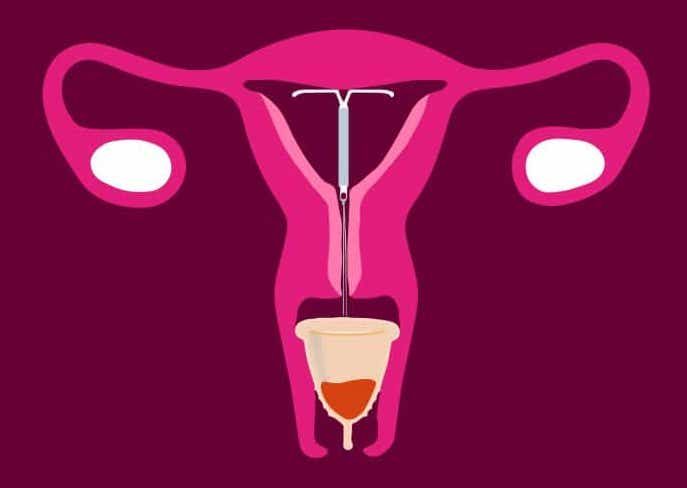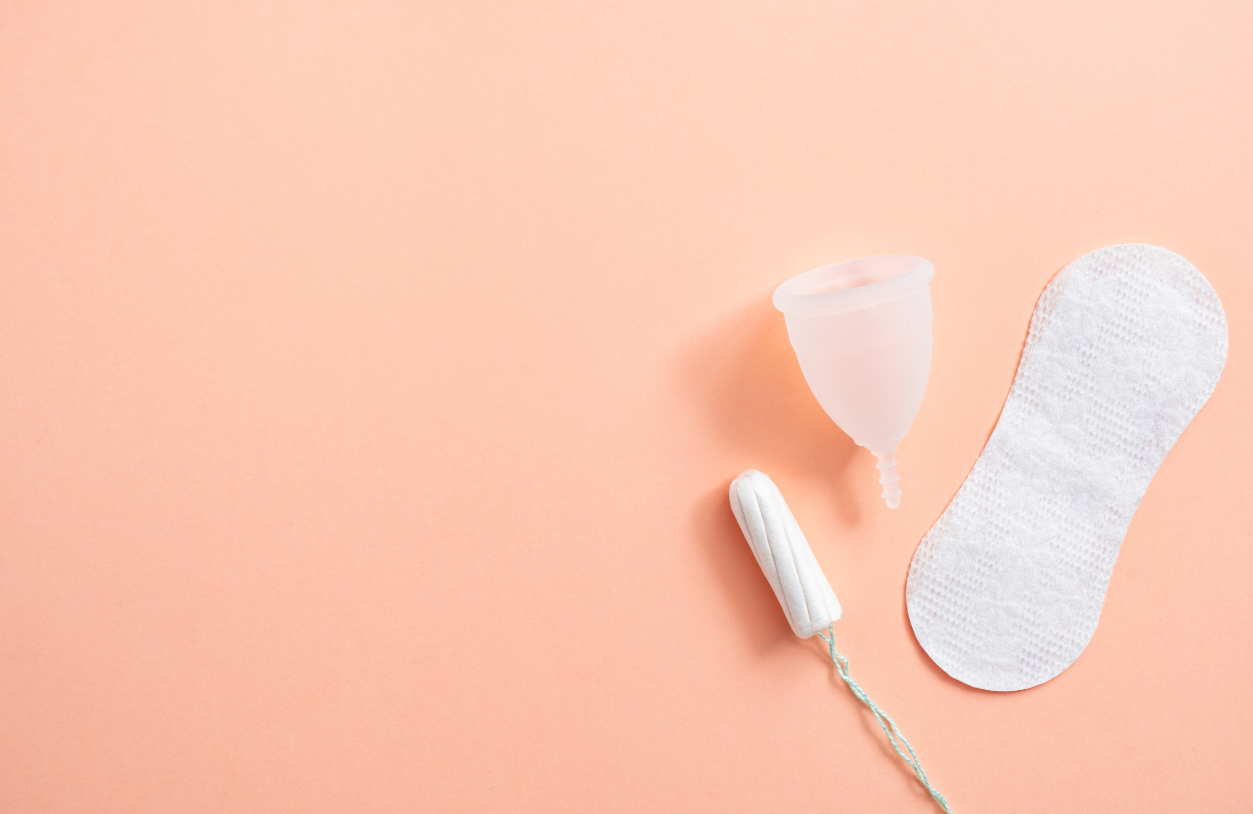Calling all IUD/IUS users: let's chat menstrual cups!
A common question asked is whether using a menstrual cup as an IUD/IUS user is safe. This blog will help you get the answers you need.
• 4 min read

Menstrual cups (this is a cup that sits in your vagina collecting period blood) are becoming increasingly popular as a more sustainable and cost-effective alternative to disposable tampons and pads. Unlike tampons, menstrual cups can be reused for up to 10 years if properly cared for. They are also made from medical-grade silicone, making them safe for long-term use. Additionally, menstrual cups can hold more fluid than tampons, making them a great option for women with heavy periods. Since the rise of people using menstrual cups, a key question has come up: is it safe to use a menstrual cup when you have an IUD/IUS?
 Graphic showing IUD/IUS inside of the uterus with strings trailing down and out the cervix. Menstrual cup positioned in the vagina collecting blood.
Graphic showing IUD/IUS inside of the uterus with strings trailing down and out the cervix. Menstrual cup positioned in the vagina collecting blood. The Breakdown
First, let's go over the difference between the IUD and IUS (note that in the U.S. they are both referred to as an IUD):
- The IUD (intrauterine device) is a small, T-shaped plastic device made of copper that is inserted into the uterus by a trained health care provider.
- The IUS (intrauterine system) is similar to the intrauterine device (IUD) in shape and method of insertion. However, it releases the hormone progestogen into the uterus as opposed to copper.
Both methods are highly effective at preventing pregnancy. Once inserted, the IUD/IUS sits inside your uterus and has strings that curl slightly under your cervix, which can be pulled out by a medical provider if you want the device removed.
Do tampons and cups increase the chance of expulsion?!
Expulsion refers to the IUD/IUS falling out or being accidentally pulled out of the uterus. The latest research reveals that the simultaneous use of menstrual cups is related to increased IUD/IUS expulsion, but there remains no association between simultaneous use of tampons and expulsion. In the 2020 study, expulsion rates among menstrual cup users and non-users by the end of year 2, were 23.2% and 6.5% respectively.

Menstrual Cup Tips for IUD/IUS Users
So why might menstrual cups increase the risk of IUD/IUS expulsion?
Part of this risk has to do with how the menstrual cup is removed. We need to be gentle when removing the menstrual cup, as it works on the basis of suction. It creates a slight suction effect on the walls of the vagina.
The first step is to break the seal of the cup. This is done by applying pressure with one of our fingers on one side first to break the suction between the cup and the walls of the vagina. After releasing the seal, you can pinch the base of the cup and gently pull the menstrual cup out. It is critical to break the seal to avoid expulsion as it reduces the suction effect of the cup, so the cup doesn’t accidentally suction your IUD/IUS strings as you’re pulling it down and out your vaginal canal.
⤴️
Update! A Dama community member informed us of a
suction-free menstrual cup they love called
Nixit. Go check them out!
While it may be frustrating that IUD/IUS strings can sometimes get in the way, they serve an important function.
🖐🏾
If you’re an IUS/IUS owner, you should be able to feel your strings if you follow
this guide for string checking. However, they can sometimes curl around your cervix making it difficult to feel so, as always, check with your provider if you’re concerned about not being able to feel your strings. They are usually cut to be around 5 centimeters (2 inches) in length.
The strings are there to allow the easy removal of the device by your healthcare provider when you’re ready for it to be removed. To learn more about how to check your strings, you could visit this website.
However, the strings can cause some issues when using a menstrual cup if:
- your strings are longer than the usual 5 centimeters (2 inches), and
- if these strings are resting on the edges of the menstrual cup as opposed to inside the cup as pictured below. If in doubt on how to properly insert your menstrual cup, check out this link for a video demonstration.
Is consulting your medical provider a must?
A medical provider is your best bet when you have any concerns, for example concerns around IUD/IUS string length or pain when inserting a cup. They may also be able to advise you on the proper size of menstrual cup to purchase and when you can start using the menstrual cup after insertion of your IUD/IUS. The fit of menstrual cups is not the same for all brands, so if you want to find the best cup fit check out the video below:
What are the alternatives to a menstrual cup?
Tampons are safe to use with an IUD/IUS as they are inserted into the vagina and do not create a suction. Pads also have no relationship with IUD/ IUS expulsion. A menstrual disc is a suitable alternative as it creates less suction than a menstrual cup.
The crux is that you don't have to worry about your IUD/IUS and your menstrual cup getting into a tangle. They'll get along just fine if you’re careful when removing the menstrual cup!

Article edited by Fiona Kennedy, MSc
Reviewed by Dr.Paulina Cecula